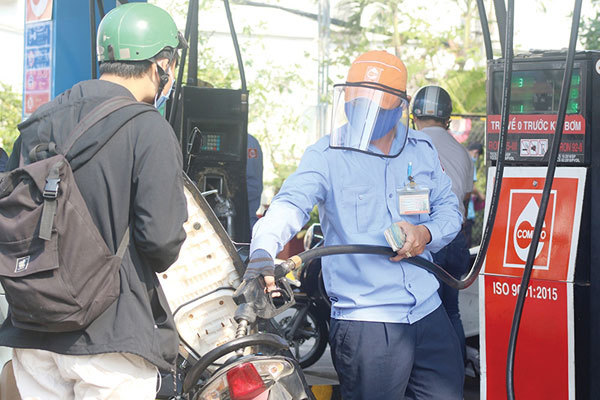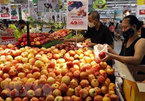 |
| A rise in global crude oil prices can push up inflation in Vietnam. VIR Photo: Le Toan |
Although the General Statistics Office has not yet released data on the consumer price data for June, inflation as measured by the consumer price index (CPI) is forecast to increase gradually over the remaining six months of 2021, though Vietnam’s inflation at the moment is maintaining a low growth rate and relatively far from the inflation-control target of about 4 per cent in 2021. Statistics from May show that the average CPI in the first five months increased by only 1.29 per cent on-year – the lowest increase in the same period since 2016.
However, the situation may change in the second half of the year.
Nguyen Chi Dung, Minister of Planning and Investment, at a working session of the National Assembly Standing Committee on June 15, warned that the complicated situation of the pandemic has been affecting all aspects of economic and social life.
Specifically, GDP for the last six months is forecast to reach nearly $173.9 billion, and GDP growth rate is forecast to reach about 5.8 per cent, lower than the government’s target.
As COVID-19 has domestically not been brought completely under control, the CPI could be strongly impacted. The upwards trend in prices in the second half of this year is likely to be prolonged due to the impact of inflation imports from the world.
Production costs may increase faster than general inflation because many businesses are closed leading to a limited supply, while input costs tend to increase globally, and Vietnam generally imports many raw and intermediate materials for production. For example, data from Hoa Phat Group shows that the price of raw materials for steel production has increased sharply. From April to May, the ore price increased from $167 to $229 per tonne and continues to increase.
Even as the average CPI in the first three months of 2021 increased by only 0.29 per cent on-year – the lowest first-quarter increase in the past 20 years, the goal of controlling inflation below 4 per cent remains a difficult task as the US and other markets launched many economic stimulus packages, leading to an increase of the global crude oil price.
According to calculations, if the average crude oil price is about $60 per barrel, the CPI in 2021 could increase by 0.9 per cent.
All forecasts lead to a sharp increase in the crude oil demand this year as countries have been reopening their economies. International organisations forecast that the average Brent oil price in 2021 will reach about $60 per barrel, an increase of 40 per cent compared to 2020, corresponding to the average domestic petrol price this year that may increase by about 25 per cent. This development could cause Vietnam’s overall CPI to increase by 0.9 percentage points compared to 2020.
The loosening of the monetary policy to promote economic growth, reflected in a series of actions such as the State Bank of Vietnam’s permission for many banks to increase their charter capital, may also have had an impact on prices in the last two quarters of the year.
Normally, economists and banks do not worry too much about commodity price fluctuations, as they are just a part of inflation compared to other costs, such as housing. However, an early warning of inflation is still required when input prices skyrocket as the market is more responsive to changes in the economy than prices of finished goods.
“Thus, inflation pressure remains present and may even increase gradually until the end of the year,” warned Nguyen Trung Tien, deputy director of the General Statistics Office. “Currently, businesses are adapting to the new normal, and commercial services and manufacturing activities are gradually reopening, increasing the demand for capital and raw materials – factors that push the price level upwards, and put inflation pressure on the whole of 2021.”
Tien realised that the continuation of the loosened monetary policy to serve economic recovery creates a demand-pull factor that will push up the prices of basic commodities. “The authorities need to closely monitor the supply and demand movements, as well as the market prices of essential commodities. That means being proactive in the management of prices at the right time with the right dosage,” Tien said.
Source: VIR

CPI growth in 2021’s first half lowest since 2016
Vietnam’s consumer price index (CPI) in the first half of 2021 grew 1.47% compared with the same period last year, the lowest rate since 2016, according to the General Statistics Office.

Expert believes inflation could fall below 4% this year
With the consumer price index (CPI) increasing by 1.47% during the first half of the year, the lowest rise since 2016, it remains entirely feasible for the country to keep inflation below 4% this year.